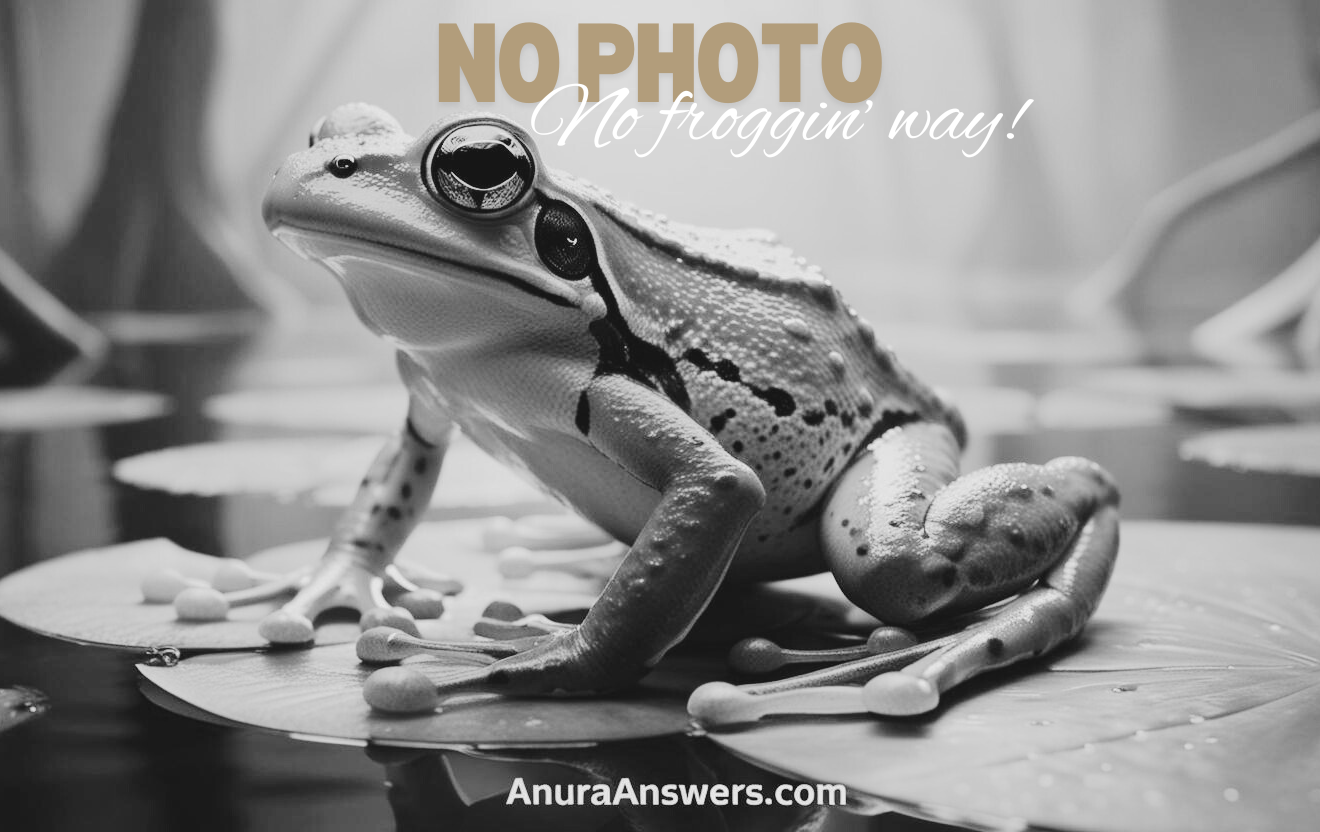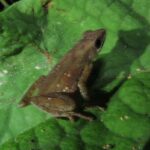Probreviceps rhodesianus: Unveiling the Hidden World of Zimbabwe’s Mysterious Forest Frog#
Deep within the lush montane forests of Zimbabwe, amidst fallen leaves and dense foliage, lives a creature as enigmatic as it is captivating—the forest-floor dwelling frog, Probreviceps rhodesianus. Known commonly as the Zimbabwe Forest Rain Frog, this amphibious marvel boasts behaviors and adaptations that fascinate biologists and naturalists alike. Shrouded in mystery and rarely glimpsed due to its secretive nature, this unique amphibian underscores the incredible biodiversity hidden within Africa’s lesser-explored ecosystems.
Join us as we venture into its shadowy domain and discover the detailed tale behind this cryptic inhabitant of Zimbabwean wilderness.
Taxonomy and Classification#
The Zimbabwe Forest Rain Frog, scientifically known as Probreviceps rhodesianus, belongs to the family Brevicipitidae. This intriguing family comprises frogs that are characteristically small, round-bodied, and primarily terrestrial. The genus Probreviceps contains several similar, elusive frog species, most of which are endemic to narrow or isolated geographical regions in Africa, highlighting their sensitive relationship with specific habitats and ecosystems.
First described in 1967 by herpetologist Donald G. Broadley, Probreviceps rhodesianus was initially classified due to its distinction from other members of the genus based on morphology, behavior, and geographic range. Its genus name, “Probreviceps,” refers to its ancestry and relation to the closely related Breviceps genus—small, squat frogs renowned for their bulbous bodies and unusually abbreviated heads.
Natural Habitat#
Confined primarily to the mountainous forests of Zimbabwe’s Eastern Highlands, Probreviceps rhodesianus occupies a niche environment tailored precisely for its elusive lifestyle. Within these humid, mist-covered forests, beneath layers of decomposing leaf litter and moss-covered logs, the frog lives hidden, its presence often signified by faint rustlings or its distinctive vocalizations heard after rainfall.
Geographic and Ecological Range#
This amphibian thrives specifically within high-altitude forests, mostly found at elevations ranging from approximately 900 to 1800 meters. Geographically isolated, the species occurs naturally within the Chimanimani and Nyanga mountain ranges in eastern Zimbabwe, habitats characterized by thick canopy coverage, ample moisture, and a persistent mist that cloaks the forest floor in a perpetual, nourishing dampness.
Adaptations to a Unique Environment#
The adaptation of Probreviceps rhodesianus to its specialized microhabitat is remarkable. Its rounded body facilitates burrowing into shallow, leaf-littered substrate, crucial for moisture retention. Furthermore, its cryptic coloration—variations of brown, gray, and green—camouflages it seamlessly among fallen leaves and bark. Moisture-dependent skin allows gas exchange directly from its damp surroundings, minimizing water loss and enhancing survival probabilities in an environment where humidity is vital to survival.
Physical Characteristics#
The Zimbabwe Forest Rain Frog is a visually striking yet secretive amphibian whose appearance blends masterfully with its surroundings. Small in stature, adults rarely exceed 30mm in length, showcasing robust and spherical bodies with notably abbreviated limbs. Their ventrally flattened bodies and short, stout legs are highly efficient for their burrowing and fossorial lifestyle, aiding them in seamlessly navigating the complex forest-floor environment.
Distinctive Features and Coloration#
A closer inspection reveals finely textured skin with granulated patterns, lending an appearance similar to moist bark or lichen-covered branches. Its coloration ranges widely but typically includes mottled browns, greens, greys, and sometimes subtle hints of yellow or darker blotching, creating a sophisticated natural camouflage against forest debris. Large eyes positioned high on their rounded heads offer an elevated visual vantage point, essential for detecting predators and potential prey amidst heavy leaf litter.
Behavior and Life Cycle#
The behavioral dynamics and captivating life history of Probreviceps rhodesianus are among the most alluring aspects of this amphibian’s existence. Primarily nocturnal, this covert creature emerges after sunset, particularly following rainfall, to forage and seek mates. Despite their diminutive size, searches amidst leaf litter and shallow burrows reveal intense nocturnal activity where clever hunting strategies and specialized mating behaviors unfold unseen by human eyes.
Feeding Habits and Predatory Tactics#
Equipped with a sticky, quick-launching tongue, this frog dietarily specializes predominantly on small insects and arthropods. It patiently ambushes prey from concealed positions, launching swift assaults only when in striking distance, thereby conserving the critical moisture necessary to its survival in humid forest floors.
Mating Rituals and Reproduction#
Particularly intriguing is their subtle yet enchanting mating ritual. Male frogs emit soft, melodic calls from hidden locations beneath dense foliage or shallow depressions in the ground. These calling behaviors, muffled but unmistakable in quiet forest nights, attract receptive females eager to secure a mate following heavy rainfall, a necessary environmental trigger.
Mating culminates in females laying eggs within hidden subterranean nests or damp leaf litter shelters instead of water bodies, a striking difference from many frog species. An entirely terrestrial life cycle characterizes this remarkable amphibian, as their eggs hatch directly into miniature frogs, skipping the aquatic tadpole phase completely—a fascinating evolutionary adaptation tailored specifically to their terrestrial, moisture-rich forest habitats.
Ecological Role#
Ecologically, Probreviceps rhodesianus plays a vital role within its montane forest ecosystem. Amphibians like this small frog are invaluable indicators of environmental health due to their sensitivity to subtle changes in moisture, temperature, and habitat quality. By effectively monitoring populations and their behavior, researchers can gauge broader ecological trends and forest ecosystem health, making Probreviceps rhodesianus a critical “bioindicator” species.
Furthermore, it occupies an important trophic position within the forest’s food web. As predator and prey, it maintains arthropod populations while simultaneously supporting the diets of larger forest residents—small reptiles, birds, and mammals—that prey upon these frogs in turn, thus enhancing biodiversity and ecological stability throughout the region.
Threats and Conservation Status#
Despite the ecological significance, Probreviceps rhodesianus faces considerable threats primarily stemming from human-related disturbances and environmental changes. Habitat destruction and deforestation arising from logging activities, agriculture, invasive plant encroachment, and human settlement expansions imperil their delicate ecosystem habitats, fragmenting already isolated populations and reducing vital moisture-laden forest spaces.
Climate variability exacerbates existing issues, altering crucial rainfall patterns and moisture regimes upon which the frogs depend for survival and reproduction. Currently, this species is listed by the International Union for Conservation of Nature (IUCN) as Near Threatened, pointing to an urgent need to undertake sustained conservation measures and habitat preservation initiatives throughout Zimbabwe’s Eastern Highlands.
Cultural and Scientific Significance#
Although this shy amphibian might lack prominent roles in traditional local cultures, its scientific significance is paramount. As a localized species uniquely adapted to Zimbabwe’s ecological nuances, it provides researchers valuable insights into evolutionary biology, terrestrial amphibian adaptations, and environmental indicators for ecosystem health and climatic conditions.
Scientific studies continue to unearth intriguing discoveries related to its behavior, physiological adaptations to terrestrial life, and how species like Probreviceps rhodesianus respond to changing microclimates, thus continuously contributing to our understanding of amphibian biology and conservation science.
Conclusion#
Probreviceps rhodesianus, the elusive Zimbabwe Forest Rain Frog, exemplifies the mystery, resilience, and fragility of our planet’s less-celebrated yet ecologically crucial animals. By deepening our understanding of its secretive life and ecology, we underscore the importance of protecting these moist forest habitats, benefiting not just frogs but numerous interconnected plants and animals of Zimbabwe’s unique biodiversity.
As nature enthusiasts and conservation advocates, our stewardship helps preserve this hidden jewel. Let us continue advocating conservation strategies, education, and appreciation for unsung species like the Zimbabwe Forest Rain Frog, safeguarding precious biodiversity for future generations.







